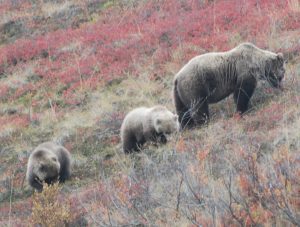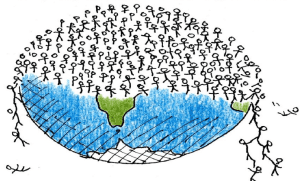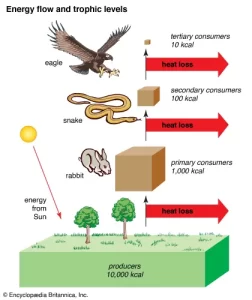Unit 8 Overview: Ecology
Introduction to Ecology
Ecology is the study of interactions among organisms and their environment, encompassing relationships within populations, communities, ecosystems, and even global processes. These relationships are dynamic and constantly influenced by environmental factors and human activity. From population interactions to global challenges like climate change, ecology helps us understand how all living beings are interconnected. 🙌
As we near the end of the AP Biology course, Unit 8 ties together concepts from previous units, demonstrating how energy flow, system interactions, and biodiversity are crucial for the resilience and survival of ecosystems. The stronger the biodiversity, the better an ecosystem can withstand disruptions and continue thriving.
Energy is key in any biological system—it dictates the success of individual species and the overall health of ecosystems. This unit will help you understand how biological systems interact, predict the outcomes of different scenarios, and emphasize the role of biodiversity in maintaining resilience.
Key Terms for Ecology
Metabolism
Exponential Growth
Logistic Growth
Carrying Capacity
Density-Dependent Factors
Density-Independent Factors
Population
Community
Ecosystem
Abiotic & Biotic
Mutualism, Commensalism, Parasitism
Predation & Competition
Food Web & Trophic Level
Niche
Keystone Species
Producer & Consumer
Sample Big Idea Questions 🤔
How does diversity affect species evolution within an ecosystem?
Diversity allows for greater genetic variability, increasing the chances of species adapting to environmental changes. A more diverse ecosystem is also more resilient, stabilizing ecosystem functions in the face of disruptions.
How is energy acquisition connected to the health of an ecosystem?
Energy flow is fundamental to ecosystem health. Organisms rely on energy to survive and reproduce, and disruptions in energy flow can cascade through an ecosystem, affecting multiple species.
How do biological disruptions change communities and ecosystems?
Biological disruptions, such as the loss of a keystone species, can lead to a decline in biodiversity and ecosystem health. Conversely, new species introductions may improve ecosystem resilience and biodiversity.
How does biological disruption affect genetic information?
Disruptions can reduce population size, diminishing genetic diversity and potentially leading to reduced adaptability and fitness over time.

How do species interactions influence ecosystem stability?
Species interactions—such as predator-prey dynamics or mutualism—help control population sizes, stabilize the ecosystem, and facilitate essential processes like pollination and nutrient cycling.
Unit Breakdown
8.1 Environmental Responses
Organisms have evolved behavioral and physiological mechanisms to respond to environmental changes, increasing their chances of survival. This includes altering behavior in response to resource availability or environmental cues, such as temperature and light levels. Organisms also exchange information through chemical signals, vocalizations, or visual cues to improve their chances of survival. 💬

8.2 & 8.7 Energy Flow and Ecosystem Disruptions
Energy is essential for maintaining order, growth, and reproduction in living organisms. Energy flows through ecosystems via metabolic processes like photosynthesis in plants or consuming other organisms in animals. 🌱🐾
Changes in energy availability impact population size—when energy is abundant, populations may grow; when energy is scarce, populations decline. The dynamics of energy flow also influence biodiversity, as different species are adapted to thrive in varying energy environments.
8.3 & 8.5 Population and Community Ecology
Populations can grow exponentially when constraints like predators or resource limitations are absent. However, in reality, such constraints eventually limit growth, resulting in logistic growth curves. Community structure is described in terms of species composition and diversity—measured by metrics like Simpson’s Diversity Index.
8.4 Density’s Role Within Populations
Population density can lead to overpopulation, where the number of individuals exceeds available resources. This creates competition, increases disease transmission, and may result in population crashes. 🌐
8.6 Biodiversity
Biodiversity enhances resilience by providing multiple ways for ecosystems to respond to environmental changes. Greater biodiversity means a more stable ecosystem capable of sustaining ecological functions. Keystone species, producers, and biotic/abiotic factors play a crucial role in maintaining ecosystem health. 🌍
Final Thoughts on Ecology
Unit 8 of AP Biology provides insight into the intricate connections between organisms and their environments. Ecology is about understanding the balance within ecosystems—how they adapt to changes, survive disruptions, and evolve to continue supporting life on Earth. The key takeaway from this unit is that energy flow, biodiversity, and species interactions are at the core of ecological resilience.








